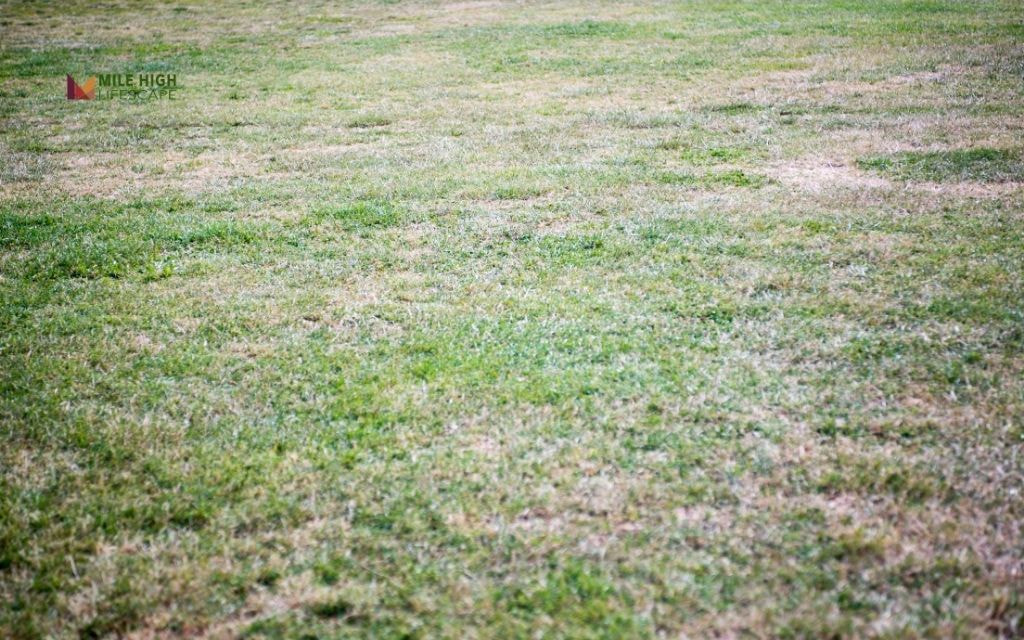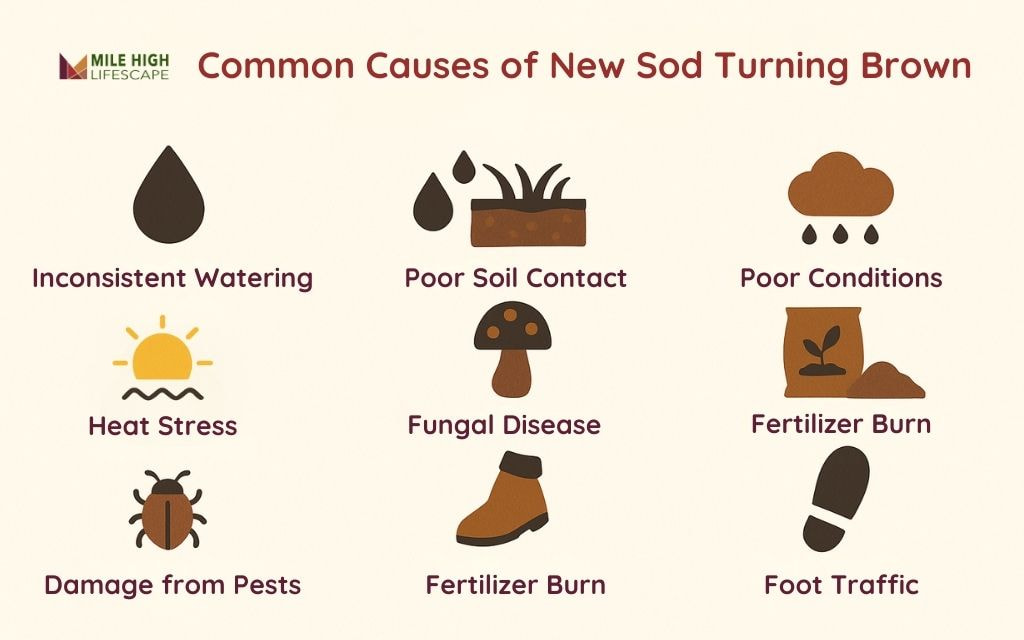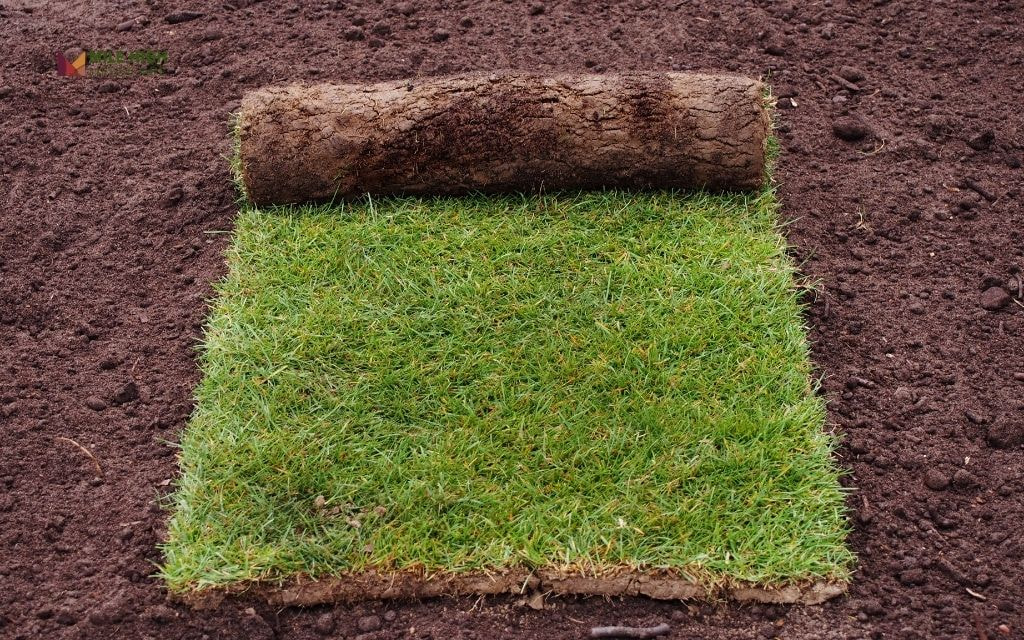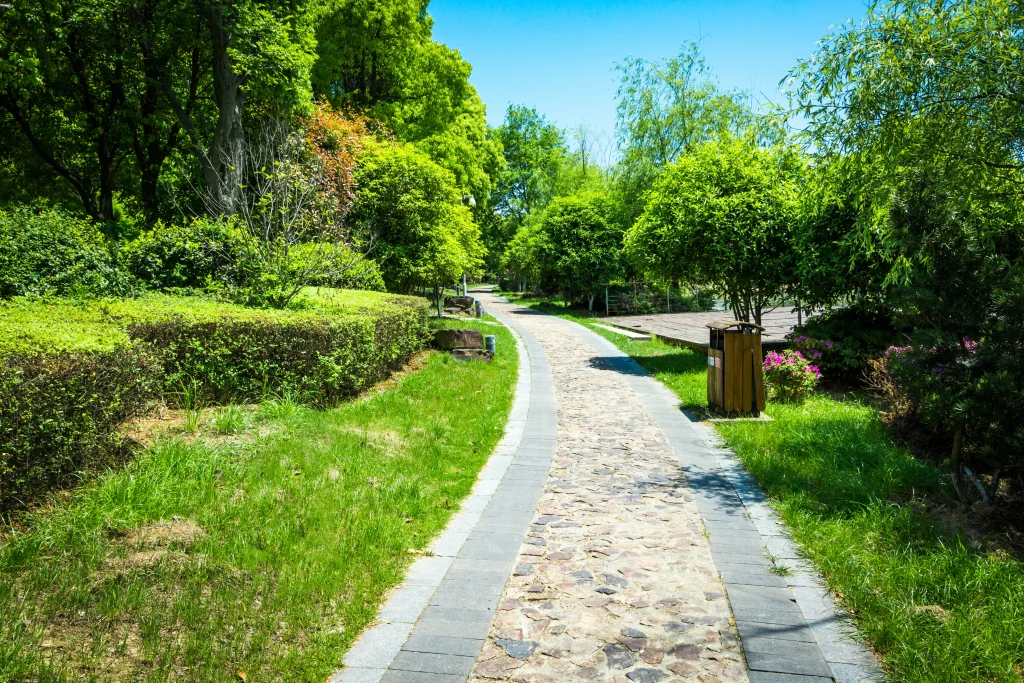Why is my new sod turning brown? The most common reasons for this condition include under-watering, over-watering, compacted soil, or damage from pests, fertilizers, or foot traffic,…
Before you panic, understand that browning is often temporary and fixable, especially considering Denver’s unique climate challenges.
In this guide, we’ll help you diagnose the exact cause of your browning sod, provide solutions tailored to Denver’s conditions, and share prevention strategies to ensure your lawn thrives.
Is It Normal for New Sod to Turn Brown?
Yes, sometimes. Some browning during the first 1-2 weeks after installation can be normal as your sod adjusts to its new environment.
This “transplant shock” happens when sod transitions from farm conditions to your yard.
Your browning sod might still be healthy if:
- The sod remains firmly rooted when gently pulled
- Brown patches are small and not expanding rapidly
- Installation occurred during a heatwave or drought period
The key lies in observing patterns, feeling the soil moisture, and tracking the timing of discoloration. These observations will help determine whether your lawn is experiencing temporary stress or facing a more serious issue.

Common Causes of New Sod Turning Brown in Denver
#1: Underwatering or Inconsistent Watering
- Symptoms: Crispy grass blades, brown edges, and rapid drying between waterings.
- Why it happens: New sod requires consistent moisture to establish proper roots. Denver’s low humidity and high elevation create conditions where moisture evaporates quickly, leaving sod vulnerable to dehydration.
- Solution: Water deeply 1-2 times daily during the first two weeks after installation. Focus on maintaining consistent soil moisture 3-4 inches deep. For sloped areas, increase watering frequency with shorter durations to prevent runoff. Use a moisture meter or the screwdriver test to verify proper hydration levels throughout the lawn.
Check out this guide to learn how to water sod properly.
#2: Overwatering and Waterlogging
- Symptoms: Yellowing that gradually turns brown, soggy soil that squishes when walked on, and slimy roots.
- Why it happens: Excessive water suffocates grass roots by limiting oxygen uptake and creates favorable conditions for fungal diseases. Many Denver properties have clay-heavy soil that retains water longer than expected, complicating proper irrigation.
- Solution: Reduce watering frequency while ensuring the top 3-4 inches remain moderately moist. Avoid late-night irrigation to prevent prolonged leaf wetness.
#3: Poor Soil Contact or Air Pockets
- Symptoms: Random brown patches throughout the lawn, sod edges lifting, and uneven coloration.
- Why it happens: Gaps between the sod and soil prevent roots from establishing contact with the ground, interrupting water and nutrient uptake.
- Solution: Roll the sod immediately after installation using a lawn roller filled partially with water. For established sod showing these symptoms within the first 10 days, re-roll affected areas. Water heavily after rolling to help settle the soil beneath loose sections and eliminate air pockets.
#4: Heat Stress and Sun Scorch
- Symptoms: Even browning across sun-exposed areas and curled grass blades.
- Why it happens: Denver’s high elevation increases UV radiation intensity, accelerating moisture loss from grass blades. During summer, surface temperatures can rise significantly, stressing new sod that hasn’t developed deep roots.
- Solution: Implement a strategic watering schedule with one session before sunrise and another after sunset during hot periods. Avoid mowing during peak heat. For sod installed during extreme heat, consider using temporary shade cloth to protect vulnerable areas until roots establish.
#5: Fungal Disease
- Symptoms: Circular brown spots with yellow halos or thinning areas that expand over time.
- Why it happens: The combination of heat and moisture creates ideal conditions for fungal pathogens like Brown Patch and Pythium.
- Solution: Adjust watering to reduce leaf wetness duration – water early in the morning rather than evening. Apply a fungicide labeled for newly established lawns if patches continue to expand. Improve air circulation by avoiding over-fertilization and ensuring proper mowing height.
Learn more about lawn fungus in this guide.

#6: Sod Installed in Poor Conditions
- Symptoms: Widespread browning shortly after installation and minimal root development after 2+ weeks.
- Why it happens: Sod quality issues such as age before installation, dried-out roots during transport, or grass varieties poorly adapted to Denver’s climate.
- Solution: Check for root development by gently pulling at the corners of affected sections. Replace non-viable sections with fresh sod. When purchasing replacement sod, focus on varieties adapted to local conditions like Kentucky Bluegrass or Tall Fescue.
#7: Damage from Pests
- Symptoms: Irregularly shaped brown spots that spread outward, sod that pulls up easily like a carpet.
- Why it happens: Insects such as grubs and sod webworms feed on grass roots or blades, severing the plant’s ability to take up water and nutrients.
- Solution: Inspect for pest activity by examining the soil beneath affected areas for grubs or looking for webworm evidence. Apply appropriate insecticide labeled safe for new sod if pests are confirmed.
#8: Fertilizer Burn or Misapplication
- Symptoms: Bleached, yellow, or orange-brown patches appearing within 24-48 hours after fertilizing.
- Why it happens: Excessive nitrogen application, fertilizing too soon after installation, or failing to water thoroughly after application can cause chemical burns.
- Solution: Water affected areas thoroughly to dilute concentrated fertilizer. For future sod fertilizer applications, use starter fertilizers with lower nitrogen and higher phosphorus content. Wait 2-3 weeks after installation before applying any fertilizer.
#9: Foot Traffic and Compaction
- Symptoms: Flattened, browning turf along walkways or paths.
- Why it happens: Walking on new sod damages developing roots and compresses soil particles, restricting water penetration, oxygen exchange, and root growth.
- Solution: Restrict foot traffic on newly installed sod for at least 2-3 weeks. For recovery, lightly aerate compacted zones once roots have established and increase watering frequency in these areas.
How to Check If Your Sod Is Still Alive
Before undertaking major interventions, verify whether your sod remains viable:
- Tug Test: Pull gently on the edges of brown sections—resistance indicates root development
- Base Check: Look for green shoots emerging near the base of brown blades
- Root Inspection: Lift a corner and look for white root strands extending into the soil
- Moisture Assessment: Soil 2 inches below the surface should feel damp, not powder-dry or soggy
If your sod passes most of these tests, recovery is highly possible with corrective measures.
How to Revive Browning Sod
When your new sod shows signs of stress but isn’t completely dead, implement this revival plan:
- Correct your watering schedule based on the diagnosed issue
- Apply a root stimulator or starter fertilizer with low nitrogen content to encourage root development
- Delay mowing until the grass rebounds to 3-4 inches in height
- Address specific issues like compaction, drainage problems, or fungal infections as identified
For Denver properties, consider the seasonal timing – revival efforts during extreme summer heat may require additional measures like temporary shading or increased watering frequency due to rapid evaporation rates.

How to Prevent Brown Spots in New Sod (Denver-Specific)
Quick Tips
- Prepare soil with quality compost or loam before installation to counter Denver’s clay soil challenges
- Select cool-season grass varieties developed for Colorado’s altitude and climate conditions
- Implement water-efficient irrigation practices that comply with Denver Water restrictions while meeting establishment needs
- Install sod during spring or fall to avoid summer heat stress when possible
- Test soil pH and amend accordingly
- Create microclimate solutions for challenging areas, such as shading west-facing exposures during establishment
When to Call a Lawn Professional
Seek expert assistance when:
- Sod remains brown after week three with no signs of rooting
- You notice distinct patterns of spreading discoloration suggesting disease
- Your irrigation appears correctly calibrated but the lawn continues to decline
- You’ve tried multiple interventions without improvement
At Mile High Lifescape, we offer free sod health inspections and new sod installation services throughout the Denver metro area to help identify and resolve establishment issues before they lead to complete lawn failure.
Conclusion
Most browning issues in new sod are reversible when addressed promptly and correctly. Denver’s unique climate presents challenges, but with proper attention to watering, soil conditions, and maintenance timing, your sod can recover and thrive.
Understanding the specific cause of new sod turning browning allows for targeted solutions rather than generic approaches that might compound the problem. With the right care strategy tailored to our region’s specific conditions, your lawn can transform from struggling to spectacular.
For personalized advice or a professional assessment of your new sod, contact Mile High Lifescape for a consultation focused on your property’s unique conditions.
Frequently Asked Questions (FAQs)
Will new sod come back after turning brown?
Yes, new sod can recover from browning if it’s experiencing dormancy rather than death. If it’s been less than 6 weeks since the browning occurred, there’s a strong chance for recovery with proper care. The key is prompt intervention and addressing the underlying cause.
How do you revive dying new sod?
No magical solution exists for dead grass, but if your sod shows signs of life, you can encourage recovery. Pull up sections where browning occurs, loosen and amend the soil beneath, then press the sod firmly back into place to ensure complete soil contact. Water thoroughly and consistently to foster new root development.
What does overwatered new sod look like?
Overwatered sod develops a distinctive appearance, include:
– Yellowing that gradually turns brown
– Spongy, soggy feel when walked upon
– Fungal growth or moss development
– Foul odor from anaerobic soil conditions
– Visible water puddles that remain hours after irrigation
How long does it take for brown sod to turn green?
Brown sod begins showing green growth within 7-10 days when the cause is temporary dormancy due to stress or insufficient water. For more severely damaged sod, recovery may take several weeks to months, requiring consistent maintenance, proper fertilization, and ideal growing conditions.
